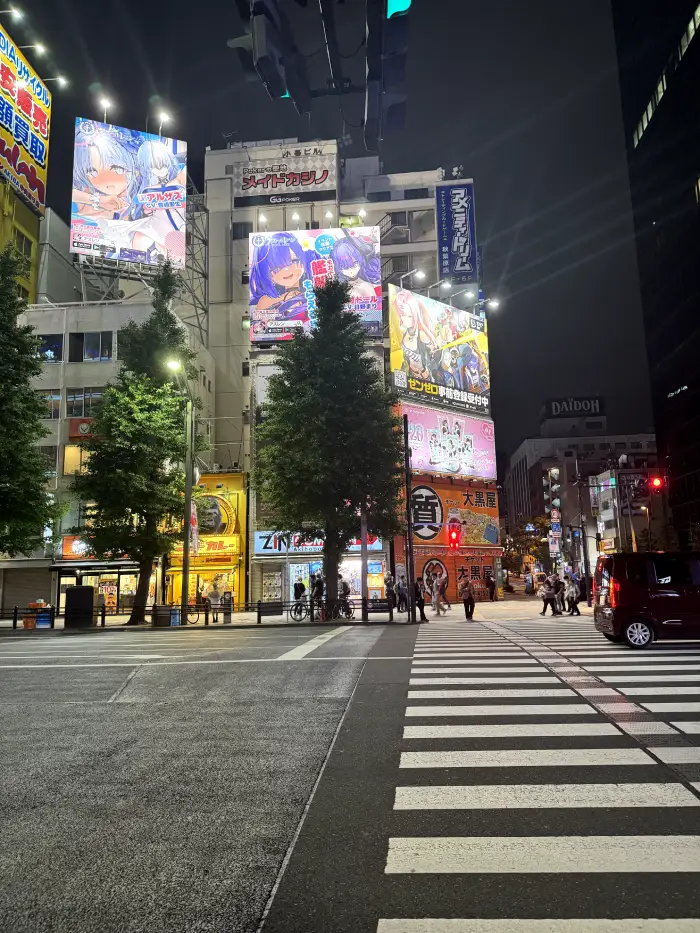Japan has always piqued the interest of travellers from far and wide. The country has its unique culture, delicious food, beautiful sceneries, historical essence, and futuristic visions. It is easy to see why people adore it.
As a solo female destination, too, Japan is a great choice. It is safe, people are extremely helpful and polite, and there is so much to experience. But the one thing that always rattles us before any solo trip is what to pack. What clothes to take or rather what not to take. What is acceptable in the country? Is it too conservative? Are bright colours welcome, or will it be frowned upon? The questions are too many.
From what I had earlier seen of Japanese fashion, I was convinced that Japan is a place of high fashion and bright colours. But once I travelled to the country, I realised that my perception was built on a microcosm that we think Japan is.
View this post on Instagram
So, before you embark on your journey to Japan, let me tell you that it isn’t as difficult as you are making it out to be. Relax, plan your perfect holiday while I tell you the list of clothes to pack for your solo female trip to Japan so that you know what to wear.
Know about some do’s and don’ts before you pack
What you carry to Japan depends on the time of year you are visiting the country. But there are certain pointers that you should keep in mind before packing for Japan.
Not too less. Not too much. Just right!
Always remember that most Japanese women dress quite conservatively in the country. Showing too much skin is frowned upon, and if you are visiting a temple or shrine in Japan, you have to cover your shoulders as a mark of respect. Do not wear a shirt to a temple or shrine in Japan.
But it doesn’t mean that you will be chastised if you happen to wear a noodle strap dress in Japan. The younger generation, though, is daring and is bringing some bold fashion to Japan. You can get a glimpse of some crazy outfits and outlandish fashion on your trip to Tokyo’s Harajuku district. But I would advise you against it. The matter is very simple. When we are visiting a country, along with everything, we have to absorb the culture and be respectful. So, when in Japan, do as the Japanese do. Wearing jeans is a good option in Japan but be sure that the top doesn’t show off too much of your waist or arm.
Japan is one of those countries where layer clothes actually work. It is because the temperature indoors is always warmer than the outside. Also, carry a jacket with you because it can get a little chilly in the evenings.
Carry proper shoes
View this post on Instagram
You cannot travel around Japan without walking and hiking. Your trip will bound to make you lose a few pounds. But don’t worry, you will balance it out with all the delicious food you will gorge on. Japanese people wear semi-formal shoes, but it is best to carry a couple of pairs of trainers (sneakers), and it will do the trick for you. Even if you are travelling to Japan in winter, do not wear flip-flops. It is an absolute no-no in Japan, and you will not find anyone wearing them. To beat the heat, you can buy a pair of crocs. This is quite well worn in Japan. But if you want to carry a pair of those high-power stilettoes for that night-out, you are more than welcome.
No yoga pants or leggings
While leggings and yoga pants are the best and comfortable clothes you can wear on your travel. Who doesn’t love stretchy pants? But when in Japan, this is frowned upon. Apparently, in Japan, leggings are seen as stockings, and as you wouldn’t only wear stockings out in public, Japanese don’t wear leggings using that logic. However, you can wear leggings if you wear shorts or a skirt on top of it. Well, I guess that’s a win-win, huh?
Tattoos are a NO too!
Tattoos are another thing that is frowned upon in Japan. So, try wearing clothes that don’t show off your tattoos. You might even not be allowed in an onsen, which is a natural hot spring if you are tatted. Also, try concealers on your tattoos if they are in places that cannot be covered with clothes.
Your swimsuits are of no use in Japan!
You, however, do not need to bring swimsuits when travelling to Japan. There is a system of communal bathing in an onsen. However, swimsuits are forbidden in an onsen (for hygienic reasons). But don’t worry. You will have to take a proper bath and clean yourself before you can step into one.
Carry loads of socks
In Japanese culture, you are supposed to take off your shoes as a mark of respect. You may have to do that before entering a shrine or a temple and also some hotels. So, in order to not walk barefoot, my advice would be to always be prepared and wear socks. But make sure that the socks have no holes because that is again a big no-no.
If your size is M, you fit into XXL in Japan.
Lastly, bring all your clothes from home. What I mean by that Japanese people are usually very petit, and so the clothing stores may not always carry clothes in your size. So, it becomes almost impossible to buy anything that fits you in Japan.
Are you a bit worried about your trip now? Do you think that nothing you own can actually be taken on your female solo trip to Japan? Fret not. Now that we have seen what you can take and what you have to toss from that already packed suitcase of yours, let me give you a list of what to carry depending on when you are visiting.
Summer
When: June-August
Temperature and humidity begin to take off during the months of June to August. You see that the locals in lightweight, breezy clothing around you. But again, remember: don’t show too much skin.
View this post on Instagram
Short skirts and trousers are the best things to carry if you are visiting Japan during this time, but you may want to avoid showing cleavage. Skirts are always a safe choice when travelling in Japan. But remember that it isn’t too short. And even if you are wearing skirts, opt to wear stockings or leggings under them. You will find plenty of Japanese people doing that.
The only place where you cannot wear skirts, and trust me, you don’t, is when visiting the teamLab Borderless. Let me tell you why. This digital museum in Tokyo gives you a multi-sensory experience, and the art here is not restricted to rooms but rather intermingles with one another and even with visitors. There is one room here where you step into a world of crystals, a dazzling infinity room full of LEDs and MIRRORS—loads and loads on them and even on the floor. So just to avoid an embarrassing moment, avoid the skirt on that day.
But do not curb your own fashion but rather work around it. For example, I wore my monochromatic noodle strap dresses with short white t-shirts underneath them. Fashionable and yet respectful, right? Summers in Japan are fun with loads of outdoor festivals, good food, and rain. So do enjoy it to the fullest.
Here is a list of what to wear in Japan during your female solo trip during summers.
- Light trousers: Jeans are a bit much in the sultry weather. So, opt for different coloured light trousers instead.
- Lightweight shirts. These serve a two-way purpose. It can either be worn on days you are planning to visit a temple or shrine. Or you can also use it to layer your clothes to make them fancy, and it will even be acceptable for those temple visits.
- A long breezy pant. Carry a few culottes with you. It is light, bright, and oh so fashionable if styled well.
- Summer dresses.
- Rompers paired with a t-shirt underneath are always a good idea.
- A wide-brimmed hat and big shades to save you from those UV rays of the sun.
- Semi-casual footwear can be worn and taken off easily. Also, make sure to carry at least a pair of shoes that can be worn in the rain because it will rain a lot.
- A folding umbrella: Though this is something that is available in plenty in local convenience stores in Japan, why take the risk. It is better if you bring a folding umbrella of your own, tucked in your bag.
Fall
When: September-November
When the trees shed leaves, and the country turns a shade of bright orange, the temperature in Japan fluctuates. It is one of the best times to travel to Japan during the fall. It isn’t as crowded as spring, but it is still plenty beautiful. Temperatures during this time are confusing. It’s too hot one day, and the next, there will be a nip in the air. If you are in a city like Kyoto, a set of kimono won’t be a bad option in the fall.
View this post on Instagram
But here’s a list of what you can wear in Japan during this time-
- Light blouses with sleeves. Mix and match with trousers and skirts during your trip. Carry both long-sleeved and 3/4th sleeved ones.
- Trousers and jeans. As I earlier told you, the temperature fluctuates during the fall season, and thus, carrying both trousers and a pair of jeans will give you options to choose from depending on the weather.
- Long skirts. This is one of the best seasons to pull off a long skirt. It isn’t too warm if the temperature soars, and it will be warm if the temperature drops a little.
- A thin cardigan or a light jacket: This is an absolute must to battle that sudden change in temperatures. After all, we don’t want to fall sick and ruin our vacation, right?
Winter
When: December-February
Depending on where you are travelling to in Japan, winters can get pretty chilly. If you are travelling to the north of the country, temperatures can go below zero degrees, whereas if you are in Tokyo, you will feel the chills with a little bit of snow here and there. But you have to be again prepared for extreme temperatures because most indoor places and transportation will have heating. So again, layering is the key here.
So, here’s what you need to pack for a Japanese winter-
View this post on Instagram
- Thermal undershirts: A bodycon thermal wear in the freezing cold has absolutely no other alternative. Not just shirts keep thermal trousers on to battle the biting cold.
- Sweaters, hoodies: Well, this one is a no-brainer.
- Trench coat: How to save yourself from the cold while also looking fashionable? The answer is the trench coat. Pair it with jeans and some tucked-in boots, and you are absolutely golden.
- Flat high boots. As I have always maintained, no matter the season, you have to always walk around Japan in order to explore every element of the country. But you can’t wear casual flats in Japanese winters. So, my advice would be to pack some sneakers and also some flat but high boots to give that fashion oomph, and it also keeps you warm.
- Beanie and big scarf: To save yourself from the howling winds, a beanie and a big scarf tightly around your neck is a must. Also, carry gloves if your hands freeze easily like mine.
Spring
When: March-June
Probably the best time to visit Japan. It is a transition season in Japan, and it is hands down the most beautiful. It is the time of cherry blossoms in Japan where everything is happy and pink. The days are usually warm, but the evenings can get a little chilly, so carry a light jacket. The best part of cherry blossoms in Japan is definitely hanami or sakura viewing. Thus, your wardrobe needs to complement the season.
Here’s a list of what to wear in Japan if you are travelling during spring.
View this post on Instagram
- Summer dresses. Pack lots of summer dresses in pastels and floral prints to get that perfect picture of the cherry blossom.
- Long pants and skirts.
- A fashionable cardigan or a light jacket. This is to pull over your dress or pants in the evenings when the sun goes down.
- A cute hat.
- A pair of comfortable shoes. For proper hanami, you have to be ready to wear your sole out. So, have proper shoes to do that.
Read more about Japan’s four seasons here.
You may think that there are too many dos and don’ts when travelling on your solo trip to Japan. But that’s not the case. Just stay true to your own style while respecting someone else’s culture and also adhering to the climatic conditions. It is as simple as that!
So, start packing. The beautiful country of Japan awaits you.








Leave a Reply